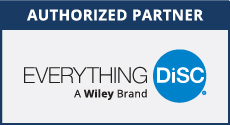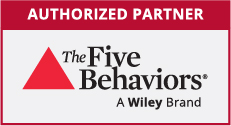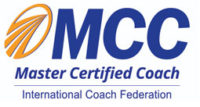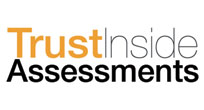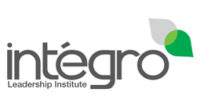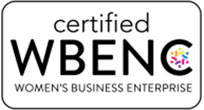People-Whispering Tip: We’re All in this Together: Letting Go of the Lone Ranger Syndrome
DiSC Assessment Application: The Five Behaviors of a Cohesive Team, Everything DiSC Virtual Certification, Complimentary Strategy Sessions and Everything DiSC Comparison Reports, and The Work of Leaders Book
Transformational Coaching Tip: Tips for Generating Dialogue
People-Whispering Tip:
“The guy who invented the wheel was an idiot. The guy who invented the other three, he was a genius.” Sid Caesar
As I work with organizations today, I see a common misdirection of focus and energy. I call this misguided approach “the Lone Ranger Syndrome.” Sure, there is a lot of lip service for becoming a high-performing team. While there is support for “teamwork” in general, too few senior leaders spend the time and attention on cultivating it within their organizations. Senior leaders are often so busy implementing their plans and strategies that they overlook the underlying dynamics that allow the plans and strategies to be successful.
In short, truly effective leadership begins with attention to the quality of your relationships. Whether you run a company, are an educator in a school, a politician in state government, or are a parent managing a family, the principle is the same. This principle is you must have collaboration to be successful. And collaboration only results from quality, trusting relationships characterized by real, authentic communication.
In the Western world, we spend a lot of time and energy on becoming successful. Too often though these well-meaning attempts to improve our leadership and personal effectiveness are centered on the individual and/or externals. We think we need all of this stuff. Perhaps it is the right look, the right training, or the right degrees that will finally do the trick. Please don’t misunderstand me. I agree that some of these things are helpful. I myself have spent a fair amount of time on credentialing and training. All of these things can be useful and have their place.
My point is we sometimes stop there not realizing the power of having trusting relationships where we know how to work together. We need to have the emotional intelligence and self-awareness to know our own strengths and areas for growth and development and understand the same for our colleagues so that we can build upon our collective strengths and mitigate our weaknesses and limitations. It is only in our collective intelligence that we can truly find our way.
We just had a state of emergency in the state of Georgia due to an unexpectedly sudden and heavy snowfall. I must agree with the media that the state handled the crisis poorly. But what struck me about the news coverage was an undue attention to when a state of emergency was called and what impact that may or may not have had on the many people who were stranded on the roadways (I was one of those unfortunate souls).
Rather than have us look frantically at the appropriate policy and whether it was followed to the letter or not, a more empowering line of questioning would be how can we create the conditions to handle a crisis as successfully as possible? The conditions that are significant are not in a policy manual. Instead they are in the relationships between the people making decisions, their ability to think intelligently in the moment, and their great commitment to what they were doing. These quality relationships in the workplace need to be encouraged with training and coaching. You can’t write that into a policy by saying “given an emergency, we trust and expect everyone to be creative.”
There is a way to cultivate these trusting and effective relationships in the workplace. That is why I am so excited to announce the partnership between Wiley and Patrick Lencioni’s work on developing effective teams which I mention in the next section of this ezine so read on!
Before I get into the “how” to cultivate trust and teamwork in future issues, let’s look at what members of trusting teams look like. In The Five Dysfunctions of a Team, Lencioni highlights the following characteristics of a trusting team. A trusting, protective team is made up of people who:
- Admit weaknesses and mistakes
- Ask for help
- Accept questions and input about their areas of responsibility
- Give one another the benefit of the doubt before arriving at a negative conclusion
- Take risks in offering feedback and assistance
- Appreciate and tap into one another’s skills and experiences
- Focus time and energy on important issues, not politics
- Offer and accept apologies without hesitation
- Look forward to meetings and other opportunities to work as a group
My take action challenge for you is, as a leader, how can you encourage more of these qualities in your team’s relationships?
DiSC® Assessment Application(s):
1) The Five Behaviors of a Cohesive Team is now available!
Best-selling author Patrick Lencioni has joined forces with Wiley (formerly Inscape Publishing) to offer this excellent process for building effective teams.
Teamwork is the lifeblood of an effective organization. Unlocking the code to getting groups of people to work together in high-performing and joyous ways is the key to a profitable and sustainable corporate culture.
The process consists of an individual and team assessment based upon Lencioni’s time-tested, proven model. The accompanying Facilitator Kit walks you through his research-based model to uncover where your team’s strengths and areas for growth and development lie.
Your team can get started for as little as $1,495.00 with the Facilitator Kit for “The Five Behaviors of a Cohesive Team.”
To take advantage of this well-designed, time-tested method to unleash your team’s potential, call our office at 404-327-6330 or email Laura@lauraadavis.com.
2) Everything DiSC Virtual Certification Coming Soon!
Do you:
- Wish you had the secret decoder ring to get along with your boss, your coworkers, and even your significant other, family members, and friends?
- Want to deepen your knowledge and understanding of human nature?
- Feel conversant in the DiSC Model so that you can connect easily, solve problems together, and work through conflicts with anyone even those “difficult” people at work?
- Know how to approach people and relate to them according to their needs?
- Convince, influence, or lead others in the best possible way?
- Work cooperatively as a team member?
An understanding of DiSC can help you in all of these areas.
A new Virtual Certification program will be released this April. Some of the features of this process include:
- Multi-level Learning Platform
- Self-Paced Study Modules
- Discussion Board Capability
- End of Course Assessment and Certification
Stay tuned for further details!
3) The Work Leaders: How Vision, Alignment and Execution Will Change the Way You Lead by Julie Straw, Mark Scullard, Susie Kukkonen, and Barry Davis
Recall this book from my friends and colleagues at Inscape/Wiley introduces the Vision-Alignment-Execution model which synthesizes the 3 fundamental responsibilities all leaders have. Leaders must craft a vision, build alignment, and champion execution. Of course, there is a lot of skill required in each of these areas which is what the book is all about. First a few definitions are in order:
- Crafting a Vision: imagining an improved future state that the group will make a reality through its work.
- Building Alignment: getting to the point where everyone in the group understands and is committed to the direction of the organization.
- Championing Execution: ensuring that the conditions are present for the imagined future to be turned into a reality.
Stay tuned for future webinars and trainings which will delve into the VAE model so you will know how you can begin to apply it to your leadership challenges.
For more on how to increase your organization’s effectiveness using the Work of Leaders profile and/or training materials, please call us at 404-327-6330 or email me at Laura@lauraadavis.com.
.jpg)
The Work of Leaders book recently released by Wiley
Transformational Coaching Tip:
How to Encourage Dialogue:
Since I am highlighting the Work of Leaders book in this ezine, I thought it might be helpful to take each driver for each aspect of the VAE model in turn and offer some tips for how to implement it in the real world. Stay tuned for future editions of this ezine to learn about the other drivers to master in your leadership journey.
The three drivers of Alignment are Clarity, Dialogue, and Inspiration. In our last issue, we highlighted the first driver of alignment which is clarity.
Here are some tips from the Work of Leaders book p. 104 on the second driver of alignment, dialogue.
Tips for Dialogue:
- Create an open and relaxed environment.
- Have one-to-one conversations with people.
- Practice reflective, active listening.
- Make sure your tone of voice and body language come across as receptive.
- Be careful not to debate or battle for your own side.
- Look for signs of people just telling you what you want to hear; then encourage more honest feedback.
For assistance in applying any of these best practices into your workplace for more powerful, effective results, feel free to call us at 404-327-6330 or email me at Laura@lauraadavis.com.


